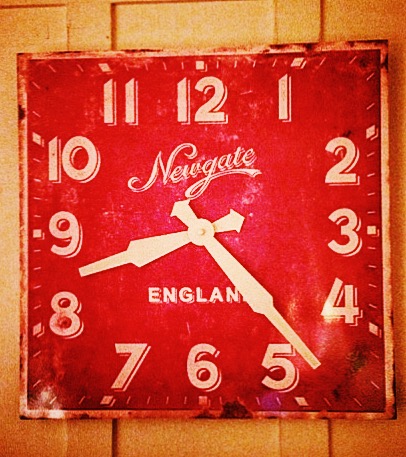Energy over Time: Part II
 In my previous post “Energy Over Time: Part I,” I discussed spending your energy wisely, by tackling your most important tasks at times when you have the most mental acuity. In this post, I’ll be looking at some of the less obvious–but vitally important–aspects of stewarding your energy for the long haul. As I mentioned in the previous post, it is critical to match your energy level with the task at hand. But it is also important to keep a healthy balance in your “energy bank account” by not consistently spending more energy than you have.
In my previous post “Energy Over Time: Part I,” I discussed spending your energy wisely, by tackling your most important tasks at times when you have the most mental acuity. In this post, I’ll be looking at some of the less obvious–but vitally important–aspects of stewarding your energy for the long haul. As I mentioned in the previous post, it is critical to match your energy level with the task at hand. But it is also important to keep a healthy balance in your “energy bank account” by not consistently spending more energy than you have.
In order to do this effectively, you must know which people and activities are energizing (your “deposits”), and which are draining (your “debits”)–and plan accordingly. Most of us do not have total control over the rhythm of our work lives; there are meetings, tasks and people to which we cannot easily say “no.” Unfortunately, many people take this to mean that they just have to “suck it up” and do whatever comes their way, whenever it comes their way.
However, you may be able to exert more control than you think.
It may be helpful to think of the “drains” and “energizers” as aspects of your energy “bank account,” where the drains are withdrawals or debits and the energizers are deposits. Like with your actual bank account, you always want bigger deposits than withdrawals. The idea is to never get overdrawn; when overdrafts occur you have to pay a penalty fee and then dig out of debt. This is maddening, exhausting, and unsustainable.
To begin, set up your “balance sheet.” The balance sheet tracks your energy deposits, your energy debits and your energy investments. Many of my clients set up daily and weekly balance sheets, so they can more easily see what they need to do to steward their energy within a given day or week.
Energy Deposits. Energy deposits are those people, circumstances or activities that reliably boost your energy. Some examples might include a colleague who is interesting or fun for you to work with, or a particularly fascinating project. Energy deposits are also made when you participate in “self care” activities like getting enough sleep, exercising and eating well, or engaging in fun activities with people you love.
Energy Debits. Energy debits are those people, circumstances, or activities that reliably drain you. Some examples might include a negative coworker who continually complains, or a project that requires a ton of work, but seems to have no focus and no end.
Energy Investments. Energy investments are those situations in which you have to spend energy you may not have in the short term in order to profit in the long term. Some examples might include attending a meeting you yourself don’t really need to go to in order to support your staff, or working an extra hour today so you don’t have to work two extra hours next week. Energy investments are those somewhat inconvenient short-term actions that substantially energize, fortify, or support your long-term work.
Your Balance Sheet. To populate your balance sheet, look at your calendar for the day or week. For each entry, consider whether it is a deposit, debit, or investment. If you have more deposits than debits, great!
Say, however, that you have more debits than deposits. What can you do?
This is when it pays to get creative. For example:
If it is a meeting that debits your energy, assess whether you really NEED to be there. Can you send someone in your stead? Can you reschedule the meeting to a time when you have more energy? Does the meeting have to be an hour long–would 30 minutes work? Can you be present for only a portion of the meeting?
If it is a certain person who debits your energy, create sturdy boundaries. Can you limit the number of times you interact with her or him in a day or week? Can you have others present to help dilute that person’s impact on your energy?
If it is a set of working conditions that debits your energy, ask yourself what exactly about the conditions is draining. Can you yourself change those conditions, for example, could you move from a windowless room to a spot with a view? And if you cannot change your draining conditions, can you decrease your contact time with them?
The idea here is not to become a slave to a meticulously maintained balance sheet. The idea is to break free from habitual ways of looking and doing things, especially when the energy outflow is too great. Developing an ongoing awareness of your credits and debits is key. You do not want to be wildly spending without tracking your bottom line.
Above all, when it comes to your balance sheet, be realistic. Too often we think we can burn the candle at both ends indefinitely, and still be okay. Know this: You cannot fuel a positive, energetic work life if you run your account with an ongoing overdraft.
